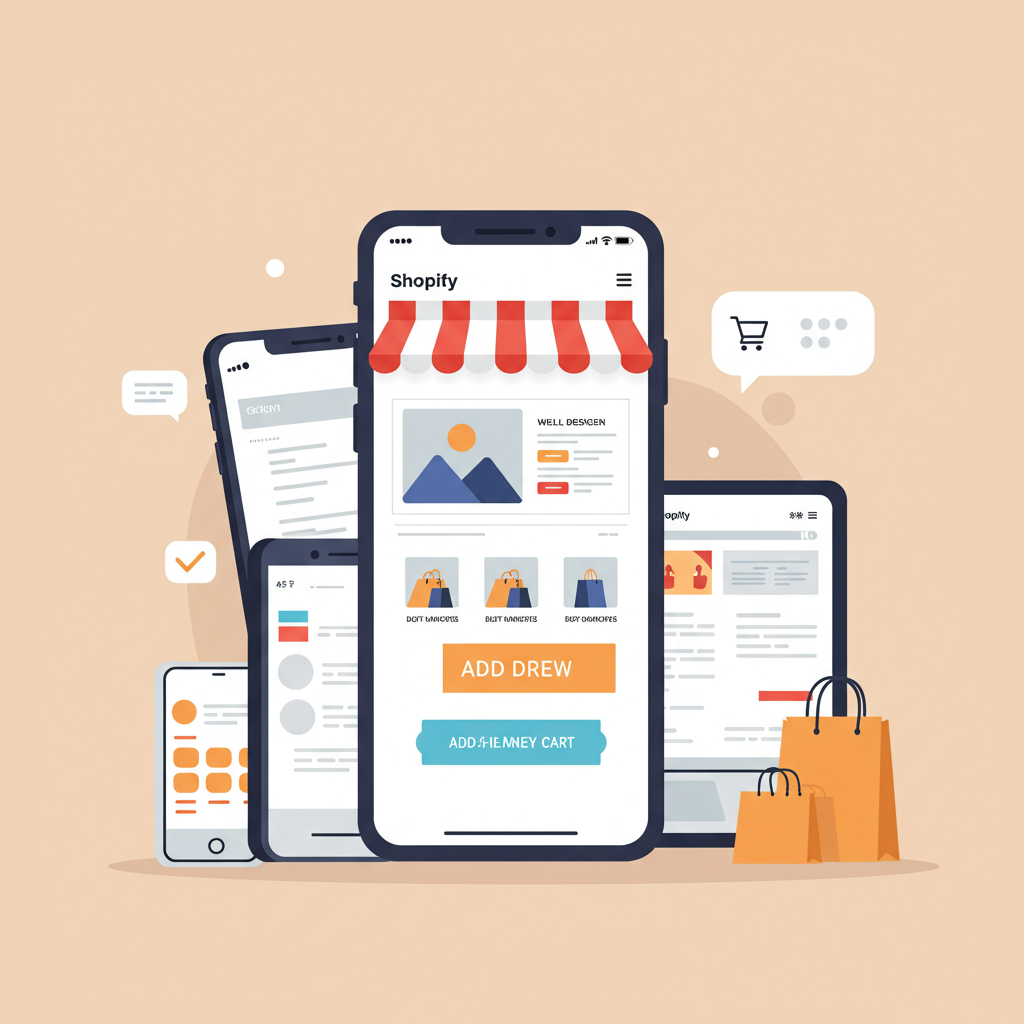Unlocking Conversions in a Mobile-Dominated World
As a Shopify merchant, I’ve personally witnessed the dramatic shift in how customers interact with online stores.
The world has undeniably gone mobile, and if your Shopify store isn’t optimized for smartphones and tablets, you’re leaving money on the table.
Think about it: when was the last time you made a significant online purchase solely from a desktop computer?
For most of us, our phones are our primary internet devices, and this trend is only accelerating.
Statistics consistently show that over half of all e-commerce traffic now originates from mobile devices.
If your store isn’t providing a seamless, intuitive experience on these smaller screens, potential customers will simply bounce.
That’s why I’ve become a staunch advocate for a mobile-first design strategy for every Shopify store.
It’s not just about making your existing desktop site shrink to fit a phone screen; that’s a common misconception.
Mobile-first means designing for the smallest screen first, prioritizing content and functionality for that limited real estate.
Then, you progressively enhance the experience for larger screens, adding more complex elements as space allows.
One of the core principles I always adhere to is content prioritization.
On a small mobile screen, every single pixel counts. You need to identify your absolute core message and essential elements.
What does your customer need to see immediately? What action do you want them to take? Strip away the clutter.
Another critical principle is speed. Mobile users are notoriously impatient, and slow loading times are a conversion killer.
I always focus on optimizing images, leveraging browser caching, and minimizing unnecessary scripts to ensure lightning-fast load times.
Your choice of Shopify theme is absolutely crucial in this mobile-first journey.
Always select a theme that is inherently responsive, meaning it automatically adjusts its layout to fit any screen size.
Before committing, I always test theme demos extensively on my own phone, as well as on a tablet, to ensure a smooth experience.
Image optimization is a big one. High-resolution images are fantastic for showcasing products, but not at the expense of speed.
While Shopify does a decent job of optimizing images automatically, I still recommend compressing your images before uploading them.
There are many free online tools that can help you reduce file size without sacrificing too much visual quality.
Mobile navigation needs to be intuitive and easy to use with a thumb.
The ubiquitous hamburger menu (those three horizontal lines) is your best friend for tucking away extensive navigation options.
Ensure your call-to-action buttons, like ‘Add to Cart’ or ‘Checkout,’ are large, prominent, and easily tappable.
Product pages are conversion hotspots, so they need special attention on mobile.
Keep product descriptions concise and scannable, using bullet points for key features.
Use high-quality, zoomable product photos that load quickly and showcase your items beautifully.
Make the ‘Add to Cart’ button impossible to miss and ensure it’s always visible, even as the user scrolls.
The checkout process is where many potential sales are lost due to friction.
I always strive to streamline this as much as possible: offer guest checkout, enable autofill options for addresses, and minimize the number of steps.
Integrate popular mobile payment methods like Apple Pay, Google Pay, or Shop Pay to make transactions incredibly fast and seamless.
Regularly testing your store on various devices and screen sizes is non-negotiable.
I often ask friends and family to navigate my store on their phones and provide feedback on any pain points they encounter.
Monitor your mobile conversion rates and bounce rates using Shopify Analytics.
Use this data to make continuous improvements and identify areas where your mobile experience might be falling short.
Don’t forget accessibility! Ensure your mobile store is usable for everyone, including those with disabilities.
Explore Shopify apps designed specifically for mobile optimization, such as those for pop-ups, sticky add-to-cart buttons, or accelerated mobile pages (AMP).
In my experience, investing time and effort into a mobile-first Shopify store pays immense dividends.
It leads to higher conversion rates, lower bounce rates, improved SEO, and ultimately, happier, more loyal customers.
Embrace mobile-first design, and watch your Shopify store not just survive, but truly thrive in today’s digital landscape.
What are your biggest challenges when optimizing your Shopify store for mobile users? I’d love to hear your thoughts!






